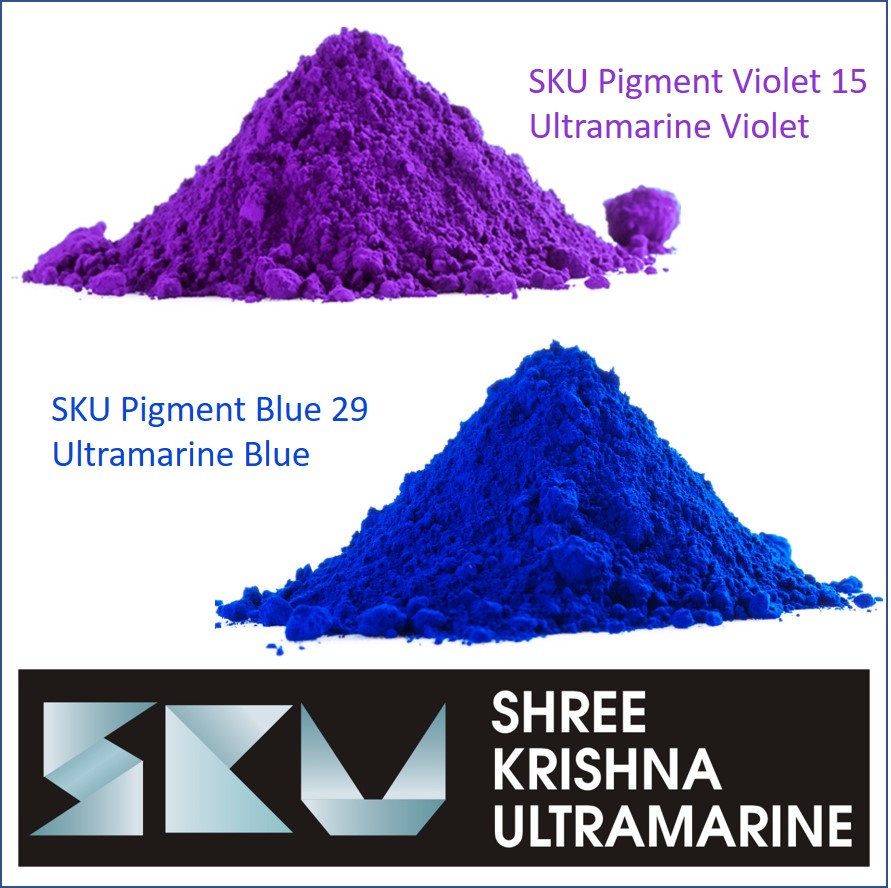The Greatest Knowledge on Ultramarine Violet That Must Know
Why Ultramarine Pigments Remain the World’s Most Trusted Blue

For generations, color has influenced art, design, and industry. Among the most iconic hues, Ultramarine is revered for its depth and richness. Today, companies like SKU Pigments produce high-quality Ultramarine pigments, including Ultramarine Blue, Ultramarine Violet, Pigment Blue 29, and Pigment Violet. From paints and plastics, Ultramarine has become the mainstay of modern blue pigments.
The Journey of Ultramarine Through Time
The name Ultramarine comes from the Latin “ultra mare,” meaning “beyond the sea,” a reference to lapis lazuli originally imported from Afghanistan. For centuries, it was the most expensive pigment, used by Renaissance masters to depict divine subjects. It symbolized luxury and spirituality.
Modern chemistry made it possible to manufacture Ultramarine pigments, bringing the once-exclusive shade into mass production. This breakthrough turned a exclusive pigment into a widely available solution for countless sectors.
Why Ultramarine Blue Leads the Industry
Ultramarine Blue pigments—the synthetic form of Pigment Blue 29—are industry favorites. Known for their stability, they are sustainable and reliable. They are used in:
• Decorative finishes for long-lasting shades.
• Automotive and packaging industries, thanks to UV resistance.
• Publishing and packaging, where precision is vital.
• Cosmetics, given their safety profile.
This balance of performance and safety keeps Ultramarine Blue among the global color leaders.
The Elegant Appeal of Violet Shades
Ultramarine Violet Ultramarine Violet offers delicate hues that appeal in cosmetics. Pigment Violet derived from Ultramarine is stable, making it ideal for sensitive products.
Its muted shade enhances fine art, while ensuring stability without chemical breakdown.
Industrial Uses of Ultramarine Blue
Pigment Blue—particularly Ultramarine Blue pigments—remains a trusted industrial choice. It offers eco-friendly performance for:
• Automotive paints with resistance to fading.
• Packaging, ensuring long-term appeal.
• Tiles, flooring, cement, adding functionality and design.
This wide applicability ensures Pigment Blue’s staying power.
Advantages of Ultramarine Pigments
• Non-Toxic & Safe: Suitable for sensitive products.
• Heat & Light Resistant: Colors don’t fade under UV.
• Eco-Friendly: Green production methods.
• Cost-Effective: Budget-friendly industrial choice.
• Versatile: Across paints, plastics, printing, and construction.
Where Ultramarine Pigments Shine
1. Paints & Coatings: Protective coatings.
2. Plastics & Rubber: Resistant to heat.
3. Cosmetics: Skincare-safe pigments.
4. Construction: Flooring products.
5. Printing & Inks: Precision printing.
The SKU Pigments Advantage
SKU Pigments stands among global suppliers, offering reliability in Ultramarine pigments. Their product portfolio includes:
• Ultramarine Blue pigments for vibrant, bold applications.
• Ultramarine Violet and Pigment Violet for elegance and subtlety.
• Custom shades for specialized markets.
Their reputation is built on consistent quality and eco-friendly production.
Ultramarine: From Heritage to High-Tech
From lapis lazuli origins to the backbone of blue pigments, Ultramarine has remained relevant for centuries. Whether it’s the timeless vibrancy of Ultramarine Blue, the sophistication of Ultramarine Violet, or the stability of Pigment Blue 29, Ultramarine pigments remain essential.
With SKU Pigments as a leading manufacturer, industries achieve innovation with color. As demand for non-toxic pigments rises, Ultramarine will lead in global markets.
Common Queries About Ultramarine
1. What is Ultramarine?
A vibrant pigment from lapis lazuli, now produced synthetically.
2. What is Pigment Blue 29?
The standard code for Ultramarine in industries.
3. Where is Ultramarine Violet used?
In eco-friendly and children’s products.
4. Are Ultramarine pigments safe?
Certified safe for cosmetics and toys.
5. Why choose SKU Pigments?
Because of quality, eco-focus, and range.